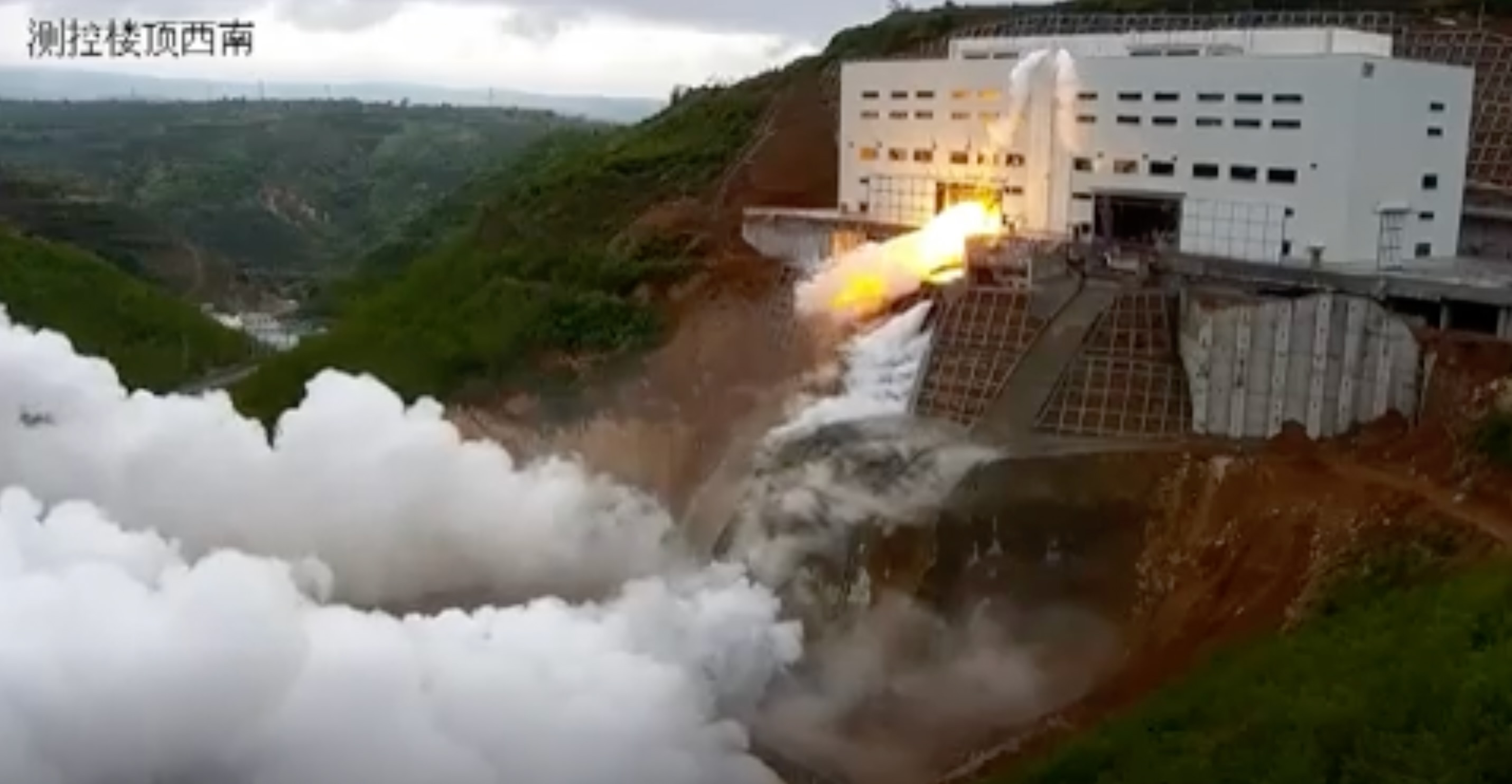Watch China break in new test site for giant moon rocket engines (video)
The remote test stand, the largest in Asia, is designed to handle very high-thrust engine tests.
China has completed a stand for testing huge rocket engines that could power the country's moon exploration efforts.
The test stand at Tongchuan in the northwestern province of Shaanxi is now Asia's largest for testing liquid-propellant rocket engines. The facility was constructed in a cut in a hillside, allowing hot rocket exhaust to be safely directed into the remote valley floor below.
The site conducted a successful engine hot fire test run on April 24, with footage demonstrating a water deluge system designed to cool the exhaust and reduce the sound pressure levels, and showing hot rocket exhaust blasting the valley floor.
Related: The latest news about China's space program
The test stand is designed to support a basic thrust of 700 tons. China has been developing engines capable of 500 tons of thrust as part of its plans to build super heavy-lift rockets for future lunar missions.
The development is a big boost to China's liquid rocket engine infrastructure, providing a substantial improvement in testing capabilities, according to the China Aerospace Science and Technology Corporation (CASC), which owns the stand and is developing China's launch vehicles.
CASC is developing huge new Long March 9 and Long March 10 series launch vehicles intended for use in deep space exploration, crewed lunar missions and the construction of space infrastructure.
Breaking space news, the latest updates on rocket launches, skywatching events and more!
Follow us @Spacedotcom, or on Facebook and Instagram.

Andrew is a freelance space journalist with a focus on reporting on China's rapidly growing space sector. He began writing for Space.com in 2019 and writes for SpaceNews, IEEE Spectrum, National Geographic, Sky & Telescope, New Scientist and others. Andrew first caught the space bug when, as a youngster, he saw Voyager images of other worlds in our solar system for the first time. Away from space, Andrew enjoys trail running in the forests of Finland. You can follow him on Twitter @AJ_FI.

